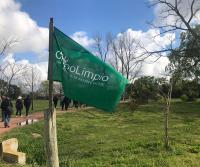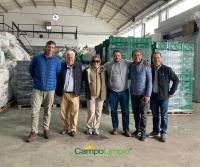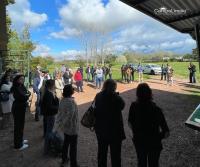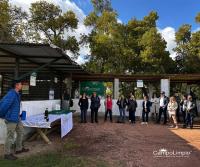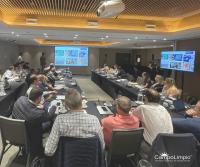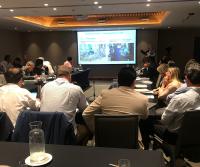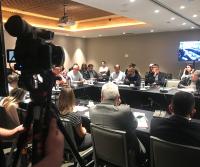After four years CropLife Latin America, its network of National Associations and the affiliated companies met in Uruguay from October 3 to 5 to exchange experiences and learn about new trends in plastic management, the circular economy and good agricultural practices; essential to move towards a more sustainable agriculture.
October 12, 2023
Sixteen presentations and the exchange of experiences from 17 Latin American countries made it possible to achieve an immersive environment on the trends for the management of plastic (rigid and flexible) and the circular economy, as keys to moving towards a Latin American agriculture with a lower environmental footprint. It happened at the CampoLimpio workshop organized by CropLife Latin America in Montevideo, Uruguay, on October 3 and 4.
With the aim of moving towards a circular economy and providing every day a better final management solution for the plastic of empty pesticide containers, the importance of Designing to recycle (Eco-design) was highlighted; an objective that the teams responsible for developing the packaging of the companies' agrochemicals. For Corteva, it is essential to promote the use of materials that are easy to collect, compatible with the recycling system and with wide mouth designs to facilitate emptying and triple washing, as highlighted by Laura Novello, LATAM Packaging Lead.
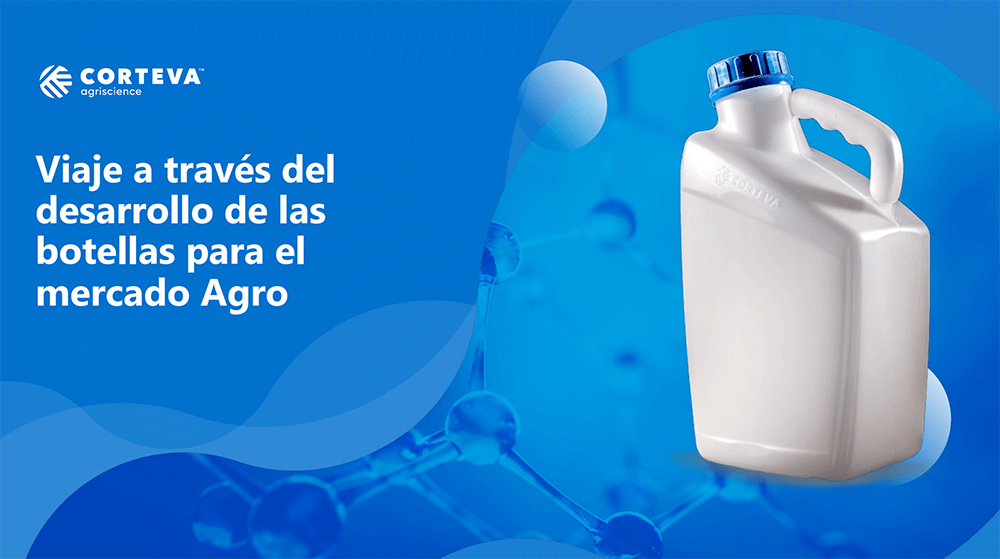
Marcelo Okamura, president of the National Institute for Processing of Empty Packages, inpEV in Brazil, highlighted the importance of packaging design, especially with colors, and advocated for the materials of the new containers to be natural in color, which facilitates recycling. InpEV and the Campo Limpo System in Brazil stand out for recovering 98% of the plastic and recycling it. They turn it into new containers for agrochemicals, lids and resins. Okamura assured that they are advancing in tests to produce two-layer containers, one of recycled material and another of virgin resin, and not three layers as is currently done.
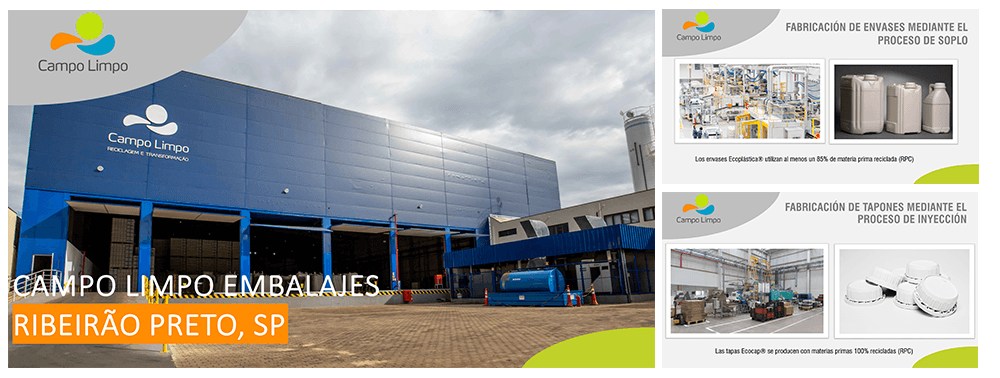
In the panel The Agriculture that awaits us, it was evident that, by necessity and legal decisions, it is essential that the CampoLimpio program incorporate other plastics and agricultural waste, such as fertilizer bags and drip irrigation tapes. This was stated by Rocío Pastor, General Director of SIGFITO in Spain, which is moving forward to comply with the European Union directive on the management of all agricultural input waste. Aldo Invernizzi, Director of the CampoLimpio Program in Uruguay, shared the progress in the recovery and processing of rigid plastic and fertilizer bags. He highlighted the headway in the management plan for obsolete products approved in 2020, which includes collection and subsequent incineration, and is a joint effort with authorities that has the support of FAO.

A undertaking to convert plastic from silo bags into bags, wallets and kitchen aprons; the importance of having the active participation of farmer cooperatives so that farmers can deliver properly washed containers to collection centers; and alliances with the recycling industry, were success stories from Uruguay presented during the day.
For his part, Jorge Hernández, Director of Agrequima, Guatemala, presented new experiences with mobile chippers that make it easier to deliver shredded plastic to recyclers at a better price, and increase collection and efficiency in the handling of the material. Jazmín Ruíz, Amocali coordinator in Mexico, highlighted that they are beginning to implement a new plastic recovery model through agricultural input distributors, collection days and the development of the Siga-Mex APP for plastic traceability. AHSAFE in Honduras presented its new integrated and financially self-sustaining management model, with a tax on the pesticide and fertilizer industry. It is a management model that has the participation of the government, farmers, manufacturers and a cement company.
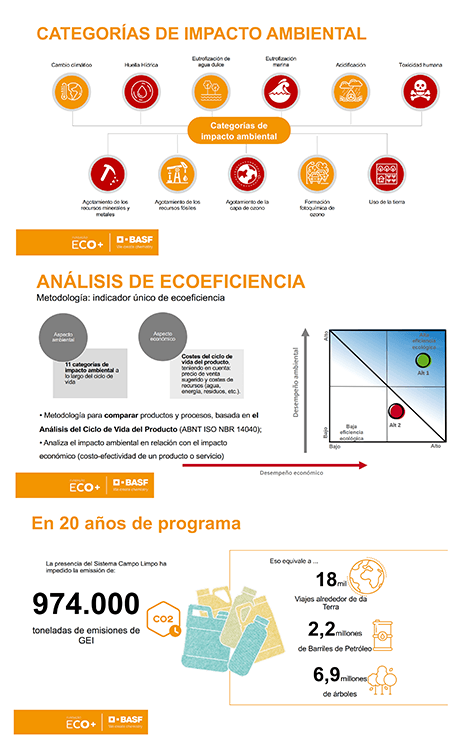 Amanda Baldochi, from the Sustainability Consultant Eco+ Foundation of BASF, presented a new Eco-efficiency analysis methodology that, with the help of software, measures the carbon footprint in the life cycle of a product or process. Which allows us to improve eco-efficiency and effectively communicate the positive impact. Eco+ works with INPEV in Brazil, with their analyzes they managed to establish that in 20 years the Campo Limpo system has prevented the emission of 974,000 tons of greenhouse gas emissions, GHG, which is equivalent to 18 thousand trips around the earth, to 2,2 million barrels of oil or 6.9 million trees.
Amanda Baldochi, from the Sustainability Consultant Eco+ Foundation of BASF, presented a new Eco-efficiency analysis methodology that, with the help of software, measures the carbon footprint in the life cycle of a product or process. Which allows us to improve eco-efficiency and effectively communicate the positive impact. Eco+ works with INPEV in Brazil, with their analyzes they managed to establish that in 20 years the Campo Limpo system has prevented the emission of 974,000 tons of greenhouse gas emissions, GHG, which is equivalent to 18 thousand trips around the earth, to 2,2 million barrels of oil or 6.9 million trees.
With these illustrative figures that facilitate communication, the panel concluded the role of CampoLimpio's communication in which the importance of narratives related to sustainability was highlighted, and supported by specific studies and data. Mónica Velásquez, Communications Director of CropLife Latin America, highlighted the importance of prioritizing objectives and audiences, of having data, studies and references that enrich communication and strengthen credibility and trust. As a success story, Agrequima, Guatemala presented how the CampoLimpio program contributes to the fulfillment of the Sustainable Development Goals, using the GRI methodology, which allows the communication of the positive impact of the program. Juan Manuel Medina and Oriana Zorrilla from the CampoLimpio Argentina team highlighted the importance of alliances, territorial presence, permanent listening and facilitating spaces for conversation around sustainable production issues.
Thus ended a productive workshop of immersion in the world of responsible management of packaging used in agriculture. Without a doubt, we are moving forward with proposals towards a more circular economy and more sustainable agriculture, stated Gabriela Briceño, Director of CuidAgro and CampoLimpio at CropLife Latin America.
PHOTO GALLERY










